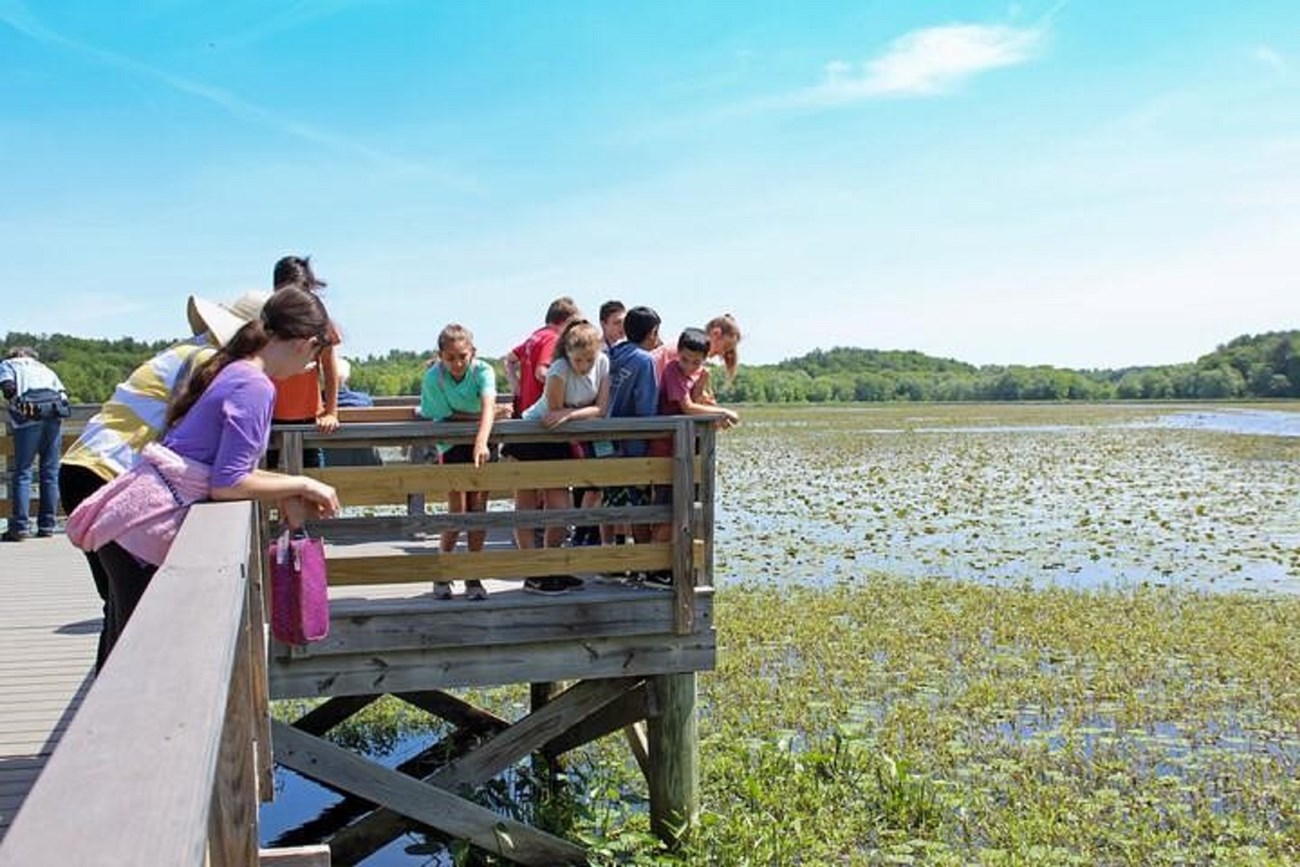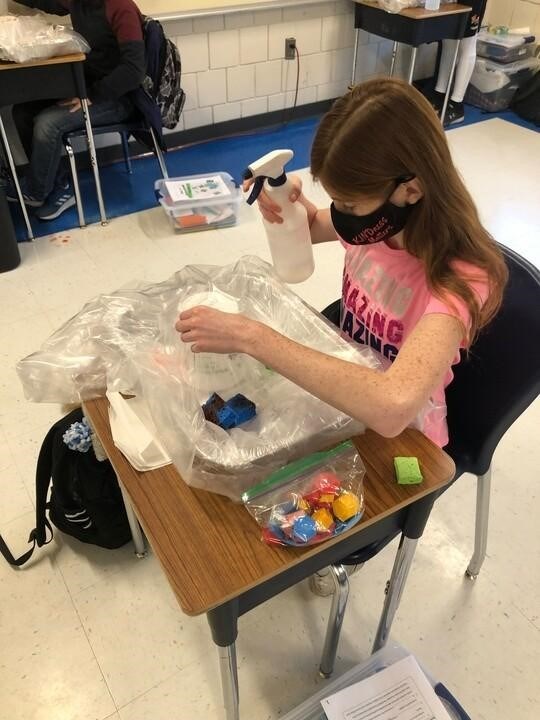Last updated: May 3, 2021
Article
Partner Spotlight | Sudbury, Assabet, and Concord (SuAsCo) Wild and Scenic Rivers Stewardship Council and Mass Audubon Create an Education Network from Rivers to Sea
The Sudbury, Assabet, and Concord (SuAsCo) Wild and Scenic River Stewardship Council (RSC) has partnered with Mass Audubon group to bring the science of rivers to schools in the watershed. The RSC provided a significant amount of funding through their grant program to support the work that Mass Audubon does along the river. The nonprofit is dedicated to protecting the nature of Massachusetts, and is working towards bringing this unique outdoor education program across the state. For the kids and teachers involved, the river not only became a part of the curriculum, but a part of the classroom.
The Riverschools Project, that recently won an award for excellence, works in collaboration with the SuAsCo River Stewardship Council to strengthen awareness and appreciation of river resources among youth who reside within the watershed. “There have been many renditions over the years. It’s been about 20 years of running them in some shape or form in the SuAsCo watershed,” explained Robin Stuart, the Education Manager for Mass Audubon's Metro West Region. “The gist of it is understanding the importance of their local rivers and exploring them in a way that they wouldn’t maybe necessarily do on their own…it’s a way to highlight these amazing spaces and get the kids out and engaged in a way that encourages them to take action, so that they can become stewards of our local rivers. And moving forward, as they go through life, [to help them] think about how valuable of a resource it is.”

Robin goes on to explain the Riverschools Project in more detail, and how it not only benefits the students, but also the teachers. “The other piece is helping students realize how connected we all are through our waterways. Whatever happens upriver is going to end up down here. The other piece is really supporting classroom teachers in their work and using rivers as a way to teach science throughout the year. For a couple of schools, their study of the rivers is actually a key piece of their science curriculum, like ecosystems or soil erosion, and brings all those key pieces together. So it’s not necessarily an add-on, but something teachers can actually use as part of their curriculum that’s already existing…here’s a real-word example and experience you can provide to your students that’s actually going to make it come to life for them.”
While the pandemic may have changed things, it hasn’t slowed down their mission. Paul Kelley, Education Coordinator at Mass Audubon's Habitat Education Center in Belmont, Massachusetts, has been working with the program throughout the past year and adapting the program to Zoom.
Thankfully, because Riverschools is so embedded into their curriculum, we’ve been able to make it work. "So we’ve been working with two schools in particular this year, one is Happy Hollow Elementary School, a fifth grade [group] in Wayland, Massachusetts." Paul explained that due to health and safety protocol during the pandemic, classes have been restricted to online-only learning. "It’s six classes of 8-10 students each. We’ll be building a watershed model online and I’m looking through the camera trying to see if everything’s right...the teachers have been so helpful with clarifying things for the students and it’s been great to work alongside them,” explained Paul. The students get a watershed-based education with hands-on experience. “We talked about watersheds, climate change, wildlife, and the next one will culminate all of those and put them together. Once the weather gets nice, we’ll go on an outdoor field trip to the river and walk there. We’re really excited to be able to get them outside during the pandemic and follow safety protocols.”
![“One part of this year is that we’re [working with teachers] to make a pandemic-proof curriculum that could be taught online or in-person,” said Paul Kelley. Photo credit: Kelly Moffet. “One part of this year is that we’re [working with teachers] to make a pandemic-proof curriculum that could be taught online or in-person,” said Paul Kelley. Photo credit: Kelly Moffet.](/articles/000/images/p2_3.jpg?maxwidth=1300&autorotate=false)
From building watershed models out of tin-foil baking pans to acting out what it would be like to be a carbon molecule, the students get the full spectrum of watershed science education. This curriculum model first introduces the students to the foundational science, next explores human impacts in the watershed and on climate, and then explores what they can do to help. From there, students design and implement an action-based project that they will present to the class. One such project was writing to government representatives about their local rivers.
Robin Stuart is excited for the future of the program, as it is being used as a template for further initiatives. “The exciting thing is that this particular program is being used as a model for what Mass Audubon is hoping to do statewide: a program that we’re calling ‘Rivers to Sea.’ It’s basically the same idea [as Riverschools] where you have the content piece that is science and standards based. In that, there is support for the students and teachers. Then you have the climate piece, and it’s specific to your town, your area, and very localized. And lastly is this larger piece of the community action project, and we want to scale it for Mass Audubon so by the time we’re done we have schools all across the state, literally from any little vernal pool and rivulet all the way out to the sea, that are engaged in this type of work in some way, shape, or form.”

This rewarding work also benefits the teachers, since during the three-year Riverschools program, one focus is the professional development of the educators.“
So that first year we [Mass Audubon] do all of the programming and focus on the professional development of the teachers. In the second year, we continue with that development and think about ways how they can actually embed this into their curriculum. We split it up, so we do some of the teaching and they do some of the teaching. The third year the teachers leave the nest and they’re not totally on their own, but they’re teaching all of the curriculum themselves and we’re the ones leading the field trips to the rivers. If you have questions or need activities or want to do something, we’re here.”
“The idea is that we’re wanting to build this learning community of the teachers where they can have us and each other as resources. You can also mentor new teachers that are coming on into the program and share your experiences and activities or how to modify it or discuss constraints, and how to overcome challenges.”
Robin has seen firsthand how this can impact the lives of those involved. “One of the teachers I've worked with for a number of years presented this work with us at different environmental conferences, and to be able to see her up in a huge room of people and be talking about her students, how proud she is of her students and the work they’ve been doing, and just the response of folks who want to see how they can implement a program like this with their own organizations--it was pretty amazing.”
Mass Audubon spreads its wings to river education and more, with a variety of resources and programs for educators on their website. You can also check out what they’re doing on the Drumlin Farm Facebook Page.
